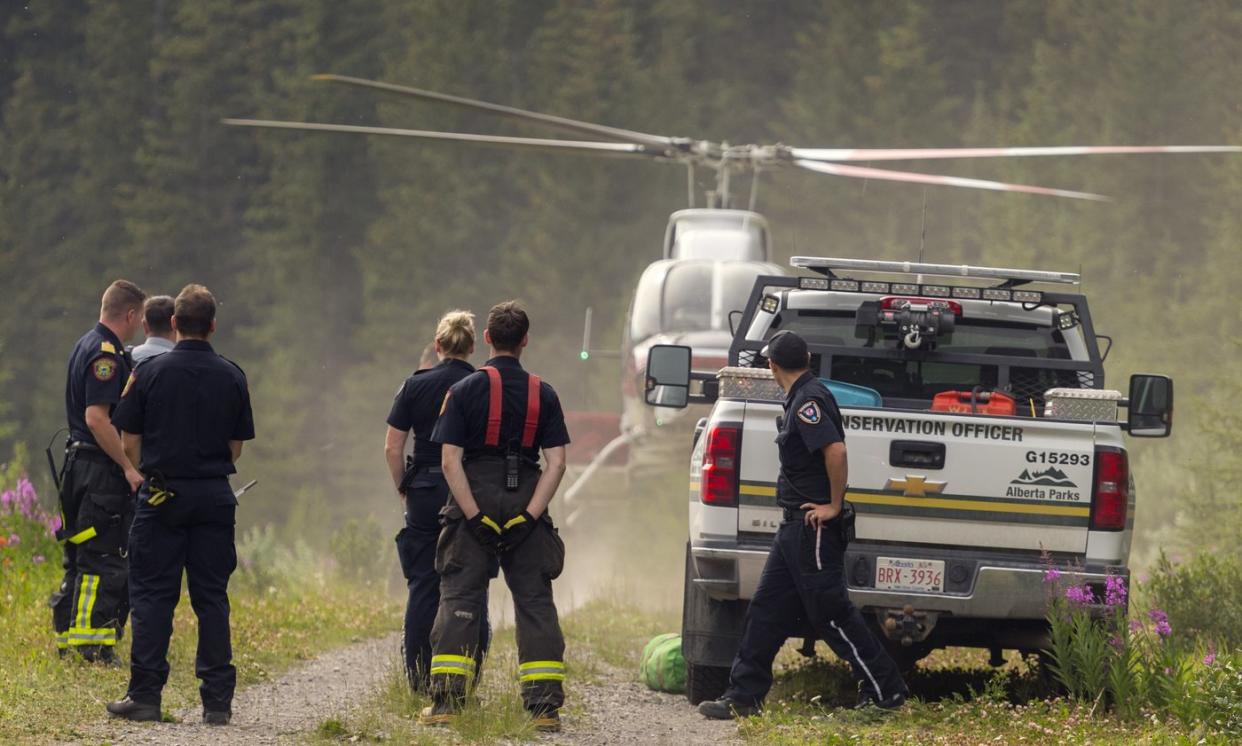Kananaskis Emergency Services revamping fire, rescue agreements for better tracking

Kananaskis Emergency Services is standardizing its fire and rescue agreements across the region to better understand service delivery needs.
Agreements with neighbouring municipalities’ fire and rescue services are in place to assist the Kananaskis Improvement District (KID) as needed, though some have historically been informal and lack response call data.
“Some of them have existed for many, many years in informal capacities. We’ve had a few that have existed in formal capacities, but we’re looking to bring them all together and create one consistent framework for that across all five districts that get served by those agreements,” said Gary Robertson, Kananaskis Emergency Services fire chief.
To ensure timely response due to geography and terrain challenges, service provision is coordinated into several districts throughout Kananaskis between KID emergency services, the province, neighbouring municipalities and Indigenous communities.
Serviced lands include roadways with a 50-metre easement and structures and facilities with a 20-metre easement, such as around campgrounds and day-use areas. Areas beyond that are managed by Alberta Parks and Alberta Wildfire.
KID, along the Highway 40 and Highway 68 corridor, is serviced directly by Kananaskis Emergency Services, while the Spray Lakes District – along the Smith Dorrien Trail to the Canmore Nordic Centre – is serviced by Canmore Fire Rescue.
Redwood Emergency Services, Diamond Valley Fire Rescue and the Foothills Country Fire departments respond to calls in the Elbow, Sheep and south Highwood districts, respectively.
As of May 16, Kananaskis Emergency Services also co-responds with Bighorn Emergency Services on an as-needed basis to what is known as the Bow Valley district, west of Highway 40 and accessed from the Trans-Canada Highway and Highway 1X.
“(…) We’re now delivering co-response with Exshaw Fire Rescue in that area recognizing that response typically requires a significant amount of resources to do safely with highway speeds and looking at lane closures,” said Robertson.
“That’s a new expansion. Those areas that are covered are all highway-based so that those events are recoverable through Alberta Transportation recovery rates.”
KID reimburses municipalities for services delivered as needed and based on fee schedules negotiated in agreements. Service agreements typically adhere to standards outlined by the provincial government for reimbursement.
In 2023, KID was invoiced a total of $3,227 for two separate emergency calls responded to by the Town of Canmore and the Town of Diamond Valley.
Until recently, however, KID has not tracked data from responding agencies unless an invoice was received for emergency response, so data on services delivered through service agreements is minimal.
A new data system procured by KID now automates collection and reporting of this data.
“It’s been a challenge before to collect that, but we’re starting to gather that now. So, we’re really sort of building the baseline through this year of what does service delivery in the entire improvement district look like, because we don’t really have a solid understanding of that,” said Robertson.
“What we’re hoping to really build as we collect the data on responses in these districts over this next year is to really understand the full scope of responses to see what the recovery amounts are. And also to look at a means to recognize and understand that to have these services delivered within these pockets of our municipality that we simply cannot access due to geographical limitations, there is an element where these other agencies have a need to be ready to respond, similar as we have a need to respond within the area that we cover.”
KID CAO Kieran Dowling said administration is working in lockstep to ensure emergency response expenditures and revenues are better captured.
“I suspect we will receive more invoices from our municipal partners as they engage in these agreements more formally,” he said. “I think the numbers in 2024 are going to provide a more accurate comparison to what services are really being delivered.”
Jessica Lee, Local Journalism Initiative Reporter, Rocky Mountain Outlook


